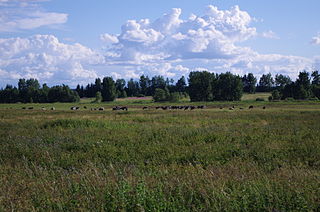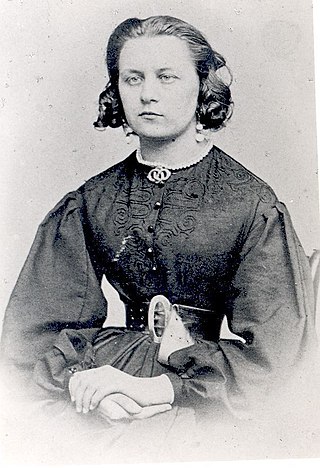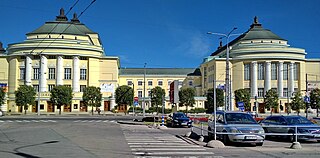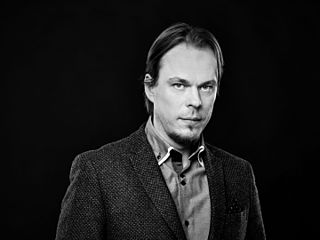
Tallinn is the capital and most populous city of Estonia. Situated on a bay in north Estonia, on the shore of the Gulf of Finland of the Baltic Sea, Tallinn has a population of about 461,000 and administratively lies in the Harju maakond (county). Tallinn is the main governmental, financial, industrial, and cultural centre of Estonia. It is located 187 km (116 mi) northwest of the country's second largest city, Tartu; however, only 80 km (50 mi) south of Helsinki, Finland, also 320 km (200 mi) west of Saint Petersburg, Russia, 300 km (190 mi) north of Riga, Latvia, and 380 km (240 mi) east of Stockholm, Sweden. From the 13th century until the first half of the 20th century, Tallinn was known in most of the world by variants of its other historical name Reval.

Tartu is the second largest city in Estonia after Tallinn. Tartu has a population of 97,435. It is 186 kilometres southeast of Tallinn and 245 kilometres northeast of Riga, Latvia. Tartu lies on the Emajõgi river, which connects the two largest lakes in Estonia, Lake Võrtsjärv and Lake Peipus. From the 13th century until the end of the 19th century, Tartu was known in most of the world by variants of its historical name Dorpat.

Baltic Germans are ethnic German inhabitants of the eastern shores of the Baltic Sea, in what today are Estonia and Latvia. Since their resettlement in 1945 after the end of World War II, Baltic Germans have markedly declined as a geographically determined ethnic group in the region.

Tartu County is one of 15 counties of Estonia.

Lydia Emilie Florentine Jannsen, known by her pen name Lydia Koidula, was an Estonian poet. Her sobriquet means 'Lydia of the Dawn' in Estonian. It was given to her by the writer Carl Robert Jakobson. She is also frequently referred to as Koidulaulik – 'Singer of the Dawn'.

Rakvere is a town in northern Estonia and the administrative centre of Lääne-Viru County, 20 km south of the Gulf of Finland of the Baltic Sea. Rakvere is the 8th most populous urban area in Estonia. Rakvere has a total area of 10.75 square kilometres, and although about 15% of Rakvere is covered by forest, it is still the country's third most densely populated urban area. From the 13th century until the early 20th century, Rakvere was more widely known by its historical German name, Wesenberg(h).
Tallink is an Estonian shipping company operating Baltic Sea cruiseferries and ropax ships from Estonia to Finland, Estonia to Sweden and Finland to Sweden. It is the largest passenger and cargo shipping company in the Baltic Sea region. It owns Silja Line and a part of SeaRail. Tallink Hotels runs four hotels in Tallinn. It is also the co-owner of a taxi company Tallink Takso.

Teet Kask is an Estonian choreographer.

Vanemuine is a theatre in Tartu, Estonia. It is the first Estonian-language theatre. Stemming from the Vanemuine Society (1865), the theatre's first performance was Lydia Koidula's Saaremaa Onupoeg at the society's fifth anniversary. In subsequent years, Vanemuine has expanded to include a symphony orchestra and ballet company, while its repertoire has included a range of operettas and music theatre through operas and dramas. Under Karl Menning, the theatre served a vocational purpose, with a great emphasis on educating future talent. Subsequent directors prioritized entertainment value, while Kaarel Ird—who led Vanemuine for more than forty years—oversaw a blend of genres as well as tours of the Soviet Union. In recent years, content has varied extensively.

Estonian National Opera is the national opera company of Estonia. The company is based at the Estonia Theatre in Tallinn. The theatre has had several names throughout its existence. The latest one being "The Estonian National Opera", which was adopted in 1998. The company produces a lively and varied season which includes operas, ballets and operettas/musicals with over 500 people currently working at the Estonian National Opera.

Koit Toome, is an Estonian singer and musical actor.

The culture of Estonia combines an indigenous heritage, represented by the country's Finnic national language Estonian, with Nordic and German cultural aspects. The culture of Estonia is considered to be significantly influenced by that of the Germanic-speaking world. Due to its history and geography, Estonia's culture has also been influenced by the traditions of other Finnic peoples in the adjacent areas, also the Baltic Germans, Balts, and Slavs, as well as by cultural developments in the former dominant powers, Sweden, Denmark and Russia. Traditionally, Estonia has been seen as an area of rivalry between western and eastern Europe on many levels. An example of this geopolitical legacy is an exceptional combination of multiple nationally recognized Christian traditions: Western Christianity and Eastern Christianity. The symbolism of the border or meeting of east and west in Estonia was well illustrated on the reverse side of the 5 krooni note. Like the mainstream cultures in the other Nordic countries, Estonian culture can be seen to build upon ascetic environmental realities and traditional livelihoods, a heritage of comparatively widespread egalitarianism arising out of practical reasons, and the ideals of closeness to nature and self-sufficiency.

The Estonian Students' Society is the largest and oldest all-male academical student society in Estonia, and is similar to the Baltic German student organizations known as corporations (Corps). It was founded in 1870 at Tartu. It has over 900 members in Estonia and abroad.
Mihkel Lüdig was an Estonian composer, organist and choir conductor. As a composer, he particularly worked on a cappella choral songs. Lüdig is considered one of the major organisers of large-scale musical events in 20th century Estonia. He was born in Vaskrääma, studied at both Moscow and St. Petersburg conservatories, and was a student of Nicolai Soloviev.

Estonia, officially the Republic of Estonia, is a country by the Baltic Sea in Europe. Located in Northern Europe, it has also been classified as Eastern or Central Europe in some contexts. It is bordered to the north by the Gulf of Finland across from Finland, to the west by the sea across from Sweden, to the south by Latvia, and to the east by Lake Peipsi and Russia. The territory of Estonia consists of the mainland, the larger islands of Saaremaa and Hiiumaa, and over 2,300 other islands and islets on the eastern coast of the Baltic Sea, covering a total area of 45,335 square kilometres (17,504 sq mi). Tallinn, the capital city, and Tartu are the two largest urban areas of the country. The Estonian language is the indigenous and official language of Estonia; it is the first language of the majority of its population, the world's second-most spoken Finnic language as well as the third-most spoken Uralic language.

Jaan (Joann) Hargel was an Estonian conductor, music teacher, oboe and flute player.

Ardo Ran Varres is an Estonian composer and actor.

Ain Mäeots is an Estonian stage, film, and television actor and stage, film, and television director and producer.

Voldemar Lender was an Estonian engineer who was the mayor of Tallinn from 1906 to 1913, notably being the first ethnic Estonian to become the mayor of Tallinn.

The Song Celebration Museum in Tartu, Estonia is dedicated to the Estonian Song Celebration tradition. The Museum is a part of the Tartu City History Museums. The museum was founded on 19 October 2007.


















